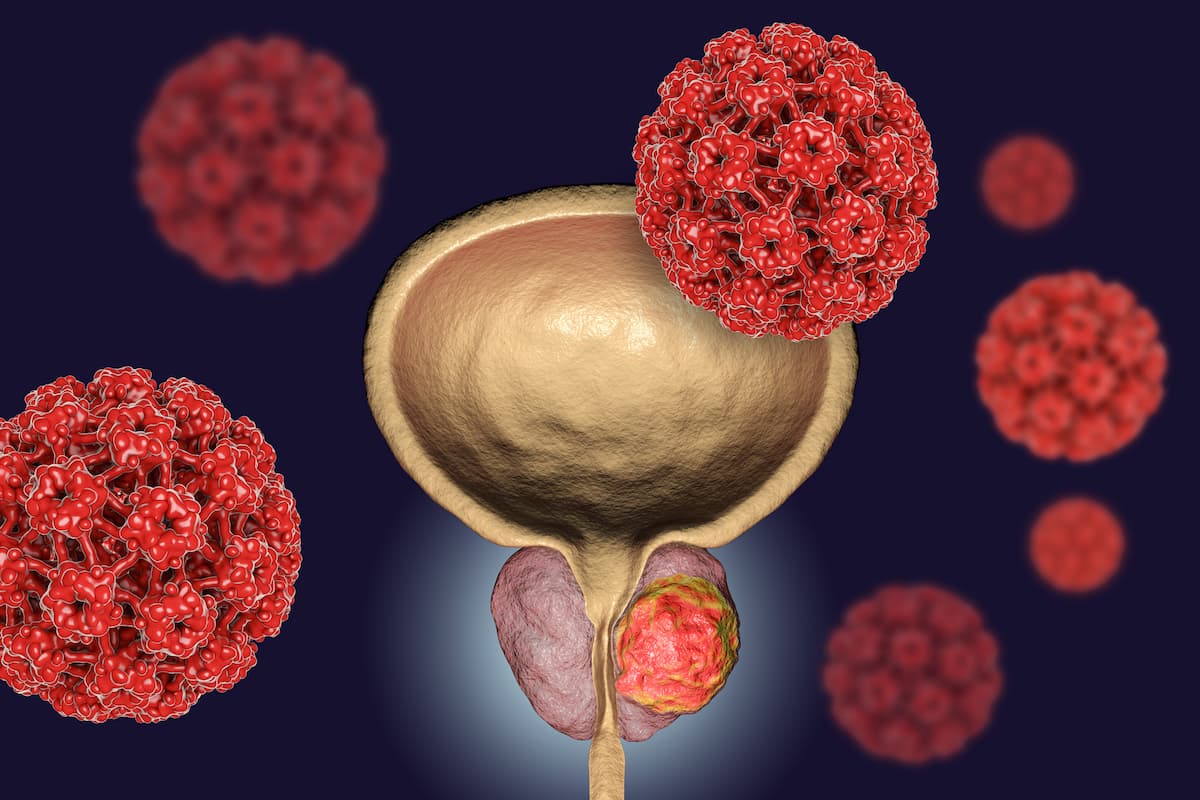
FDA Approves Olaparib Combo in BRCA-Mutated mCRPC

Patients with BRCA-mutated metastatic castration-resistant prostate cancer can now receive treatment with olaparib plus abiraterone/prednisone or prednisolone following the combination’s approval by the FDA.
Olaparib (Lynparza) plus abiraterone and prednisone or prednisolone has received FDA approval for patients with BRCA-mutated metastatic castration-resistant prostate cancer as determined by an FDA-approved test, according to a press release from the FDA.1
The approval was based on results from the phase 3 PROpel trial (NCT03732820), which was presented at the
Radiographic progression-free survival showed significant improvement in the olaparib arm vs the placebo arm. In a subgroup analysis of 85 patients with a BRCA mutation, the median radiographic PFS was not reached in the olaparib arm vs 8 months (95% CI, 6-15) in the placebo arm (hazard ratio [HR], 0.24; 95% CI, 0.12-0.45). The overall survival (OS) HR was 0.30 (95% CI, 0.15-0.59).
For patients without a BRCA mutation, the radiographic PFS HR was 0.77 (95% CI, 0.63-0.96) and the OS HR was 0.92 (95% CI, 074-1.14).
“The PROpel study is the first in unselected patients to extend the amount of time that men have before their cancer progresses or they die from mCRPC in the first-line setting. It did so by demonstrating benefits above and beyond abiraterone alone, a very active comparator, by delaying this amount of time that patients have by somewhere between 8 and 10 months,” Andrew Armstong, MD, MSc, professor of Medicine, professor of surgery, and professor in pharmacology and cancer biology at Duke Health, said in an interview with CancerNetwork®.
A total of 796 patients were included in the trial and were randomly assigned to either the abiraterone and olaparib arm (n = 399) or the abiraterone and placebo arm (n = 397). HRR testing was also conducted, with 28.4% of patients being included in the HRR-mutant subgroup and 69.3% in the non-HRR mutant subgroups; 2.3% of patients had an unknown mutational status.
The median imaging-based progression-free survival (PFS) was 24.8 months in the olaparib arm vs 16.6 months in the placebo arm (HR, 0.66; 95% CI, 0.54-0.81; P <.001). In a prespecified sensitivity analysis, the imaging-based median PFS by blinded independent central review was 27.6 months in the olaparib group vs 16.4 months in the placebo group (HR, 0.61; 95% CI, 0.49-0.74).
The HRR-mutational status was established in 67.2% of patients via tumor tissue test. Of these 535 patients, 92.2% received circulating tumor DNA (ctDNA) testing and 97.7% received aggregated tissue and ctDNA test results. Imaging-based PFS favored the olaparib group among those with an HRR mutation (HR, 0.50; 95% CI, 0.34-0.73) and non-HRR-mutation (HR, 0.76; 95% CI, 0.60-0.97).
At the primary analysis, with the first data cutoff, the overall survival data were immature (HR, 0.86; 95% CI, 0.66-1.12; P = .29). The time to first subsequent therapy (HR, 0.74; 95% CI, 0.61-0.90) and PFS at the second analysis (HR, 0.69; 95% CI, 0.51-0.94) both supported efficacy after initial imaging-based progression. Subsequent therapy was given to 305 patients.
The objective response rate was 58.4% in the olaparib arm vs 48.1% in the placebo arm (OR, 1.60; 95% CI, 1.02-2.53). Confirmed prostate-specific antigen (PSA) response reported in 79.3% of patients in the olaparib arm vs 69.2% in the placebo arm. In the olaparib arm, the median time to PSA progression was not reached compared with 12.0 months in the placebo arm (HR, 0.55; 95% CI, 0.45-0.68).
Patients had a median duration of exposure of 17.5 months for olaparib, 15.7 months for placebo, 18.2 months for abiraterone in the olaparib arm, and 15.7 months for abiraterone in the placebo arm.
The most common grade 3 or higher adverse effect (AEs) was anemia, which occurred in 15.1% of patients in the olaparib arm and 3.3% in the placebo arm. Discontinuation of treatment due to AEs occurred in 8.5% of patients in the olaparib and 8.8% of those in the placebo arm, respectively.
Pulmonary embolism was observed in 6.5% of patients in the olaparib arm vs 1.8% in the placebo arm, with dose interruptions occurring in 2.0% vs 1.5% of patients, respectively. Deep-vein thrombosis also occurred in 1.8% of patients in the olaparib arm vs 0.8% in the placebo arm.
In April 2023, the
References
- FDA approves olaparib with abiraterone and prednisone (prednisolone) for BRCA-mutated metastatic castration-resistant prostate cancer. News release. FDA. May 31, 2023. Accessed May 31, 2023. https://bit.ly/3C2UVzg
- Clarke NW, Armstrong A, Thiery-Vuillemin A, et al. Abiraterone and olaparib for metastatic castration-resistant prostate cancer. N Engl J Med Evi. 2022:1(9). doi:10.1056/EVIDoa2200043
- Oncologic Drugs Advisory Committee (ODAC) Meeting. Streamed live April 28, 2023. Accessed May 31, 2023. https://bit.ly/429twqs
Newsletter
Stay up to date on recent advances in the multidisciplinary approach to cancer.

















































































